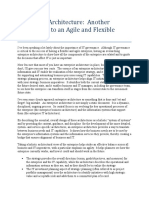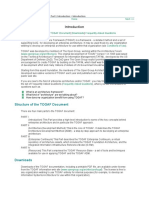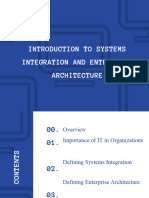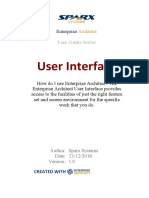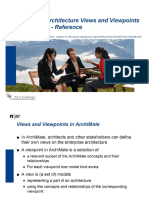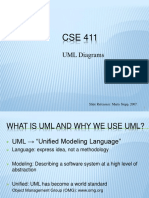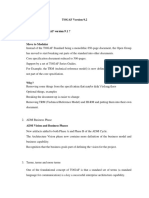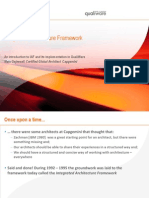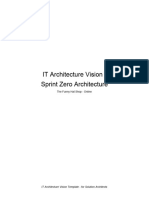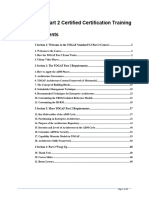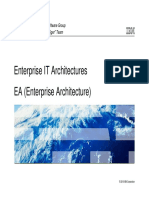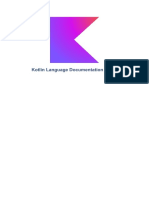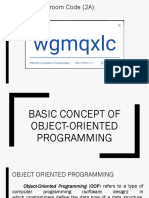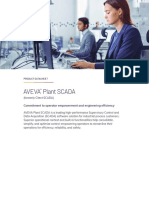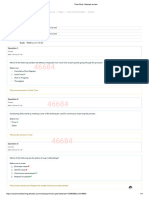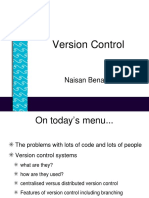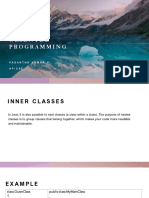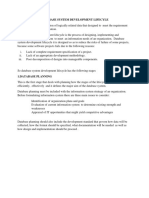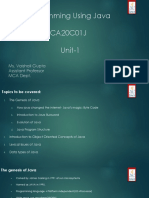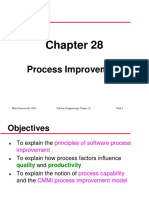CHAPTER 1
Introduction to Enterprise
Architecture
prepared By
MUHAMAD ROSTAN BIN ZAKARIA
�What we learn on this chapter is:
Introduction.
Enterprise Architecture definition.
Enterprise Architecture frameworks.
Enterprise Architecture Lifecycle.
Enterprise Architecture benefits
Enterprise Architecture challenges
Enterprise Architecture driven
approach for IT strategy.
�Introduction
Any Enterprise can achieve good Maturity level in its IT
operation and services if they have the following
1.
2.
3.
The clear mission and vision that adopt ICT as success
factor
Management support and commitment to the Enterprise
mission and vision
The adoption of an Enterprise Architecture standard
framework (TOGAF ,Zachman,..)
�What is Enterprise
Architecture ?
There are many definitions of enterprise architecture. Most focus
on structure and organization. Two definitions are given below
The organizing logic for business processes and IT
infrastructure reflecting the integration and standardization
requirements of the firms operating model.
A conceptual blueprint that defines the structure and
operation of an organization. The intent of an enterprise
architecture is to determine how an organization can most
effectively achieve its current and future objectives.
�Continued
A Enterprise is a collection of organizations that share a
common set of goals:
Government
Part of a corporation
Corporation.
Large corporations may comprise multiple enterprise. May be an
extended enterprise including partners, suppliers and customers.
An
Architecture is the fundamental organization of something,
embodied in:
Its components
Their relationship to each other and the environment
And the principals governing its design and evolution.
�Why do we Need Enterprise
Architecture?
The purpose of enterprise architecture is to
optimize across the enterprise the often
fragmented legacy of processes (both manual and
automated) into an integrated environment
. Effective management and exploitation of
information through IT is a key factor to business
success, and An enterprise architecture addresses
this need, by providing a strategic direction for IT
activities.
Two key reasons why you need an enterprise architecture:
-Critical to business survival and success
-Enables managed innovation within the enterprise.
�Continued..
�CONTINUED
THE BENEFITS
BUSINESS BENEFITS
IT BENEFITS
Helps an enterprise achieve
its business strategy
Increases the efficiency of
business and IT operations
Shortens time to market for
new innovations and
capabilities
Provides better return on
existing investment
Provides consistent business
process and information
across business units
Reduces risk for future
investment
Improve reliability and
security, and reduce risk
Ensures faster and simpler
procurement
�Continued
A more efficient business operation:
Lower business operation costs
More agile organization
Business capabilities shared across the organization
Lower change management costs
More flexible workforce
Improved business productivity
A more efficient IT operation:
Lower software development, support, and maintenance costs
Increased portability of applications
Improved interoperability and easier system and network management
Improved ability to address critical enterprise-wide issues like security
Easier upgrade and exchange of system components
�Continued..
Better return on existing investment, reduced risk for future investment:
Reduced complexity in the business and IT
Maximum return on investment in existing business and IT infrastructure
The flexibility to make, buy, or out-source business and IT solutions
Reduced risk overall in new investments and their cost of ownership
Faster, simpler, and cheaper procurement:
Buying decisions are simpler, because the information governing procurement is readily
available in a coherent plan
The procurement process is faster - maximizing procurement speed and flexibility without
sacrificing architectural coherence
The ability to procure heterogeneous, multi-vendor open systems
The ability to secure more economic capabilities
�Enterprise Architecture frameworks
What is an Architecture Framework?
It is a tool that can be used for developing a broad range of
different architectures. It should describe a method for
designing an information system in terms of a set of
building blocks, and for showing how the building blocks
fit together.
There are many enterprise-architecture frameworks none of
the enterprise-architecture methodologies is really
complete. Each has its strengths and weaknesses.
Examples : TOGAF , ARIS , ZACHMAN
,CIMOSA , DoD
�TOGAF
�ZACHMAN
�How Does EA Related to Major IT
Frameworks?
�Enterprise Architecture Lifecycle?
�Enterprise Architecture challenges
Many EA frameworks , how to choose best fit?
Lack of senior management support
Lack of training
Lack of patience, EA is ongoing iterative cycles.
�EA driven approach for IT strategy.
IT strategy should be derived or inherited from business
strategic plan which help to achieve IT / Business alignment
To do so an enterprise must develop a mature Enterprise
Architecture roadmap which help in specifying IT future
needs.
�Thank You
